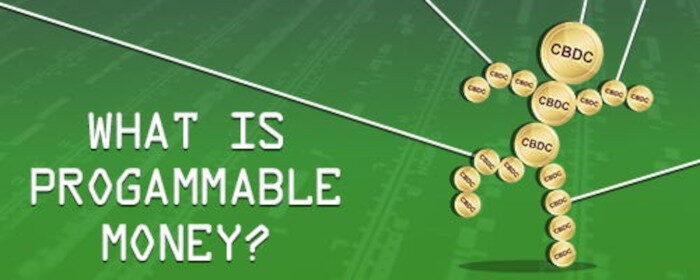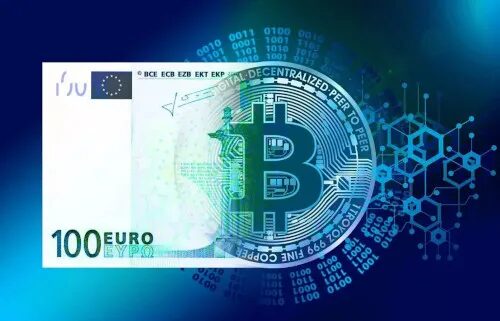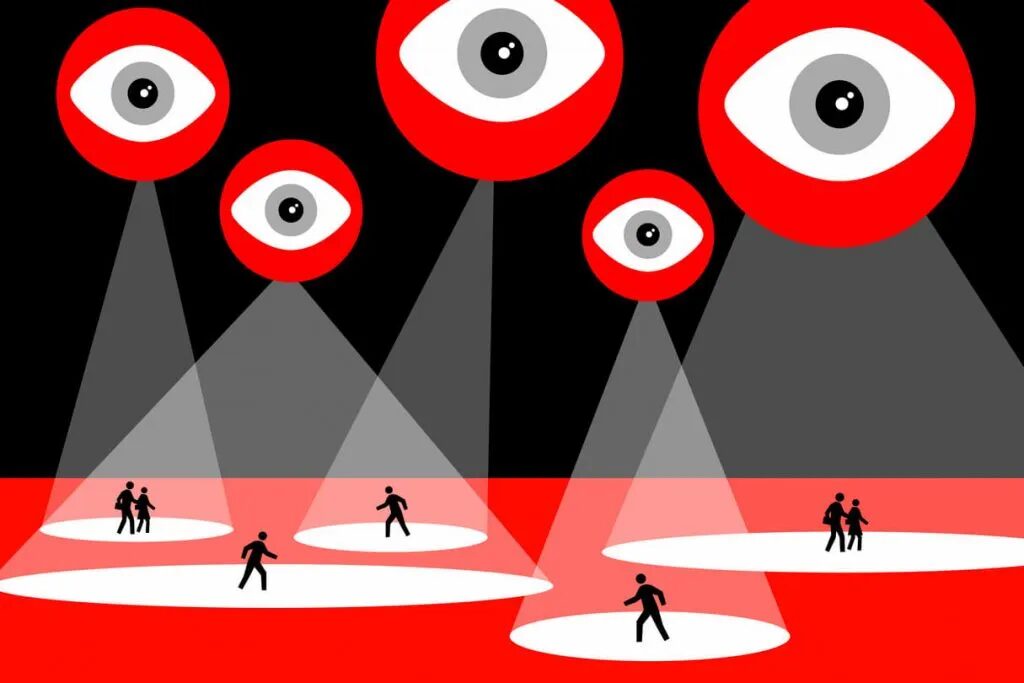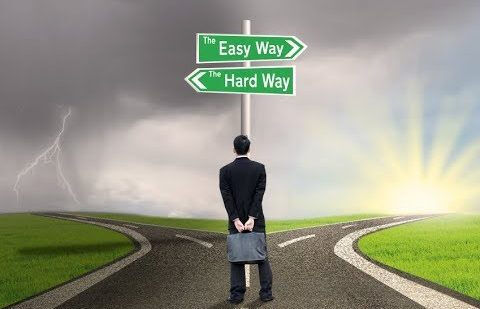There are those who read that SWIFT has "solve[d] the significant challenge of interoperability in cross-border transactions by bridging between different distributed ledger technology (DLT) networks and existing payment systems" and
- get a chill down their spine
- rub their hands in glee
- ask what SWIFT is, get bored halfway through the answer and go back to checking their TikTok feed
But I guarantee most of your friends, family, co-workers, neighbours and acquaintances are in the third category. And who can blame them? Financial mumbo-jumbo is designed to be as eye-wateringly boring and unsexy as possible.
But here's the rub: while the public focuses on distractions and entertainment, the global banking cabal is hard at work engineering a new form of money that will serve as the backbone of the most sophisticated system of financial surveillance and control the world has ever seen. It is not hyperbole to say that the very fate of the human species hangs in the balance.
So, are you at a loss to explain to your normie friends why the coming central bank digital currency (CBDC) paradigm is so important and why it should be a primary concern for all of humanity?
Well, then, today is your lucky day. This editorial is for you . . . and them!
WHAT IS PROGRAMMABLE MONEY?
Let's start today's exploration with a simple question: what is central bank digital currency?
Here's the not-so-simple answer: central bank digital currency is an electronic token of a nation's official currency issued by that nation's monetary authority, often (but not exclusively) using distributed ledger technology.
Still unclear? Don't worry, that's to be expected. Specialist language is often used to dissuade the public from becoming engaged in important topics, and the world of currency creation is certainly no exception to that rule. From the IMF's SDRs to SWIFT and CIPS, from DLTs to CBDCs, from the petroyuan to the digital yuan, those seeking a deeper understanding of monetary matters quickly find themselves drowning in a sea of impenetrable acronyms and complicated jargon.
So let's get back to basics: what is money?
Although it's a simple question, the answer to that question largely depends on who you ask.
If you ask a member of the Sound Money Defense League, you'll get an earful about the history of precious metals.
If you ask John Titus, you'll get a half-hour presentation involving coloured marbles and Kool Kats and Jolly Jesters. (Seriously, watch the video. It's good.)
If you ask me, you'll get a documentary on the Federal Reserve or a radio program on monetary reform or an hour-long podcast on Survival Currency.
But if you ask our friends (<-SARCASM!) over at the Bank for International Settlements, you'll get a Jackson Pollack-inspired work of visual diarrhoea that looks like this:
(Seriously, whoever is making these infographics for the BIS and the WHO and the other members of the globalist alphabet mafia needs to be fired.)
But, as ridiculous as this kaleidoscopic Venn diagram of nonsense may seem at first glance, the "money flower" does tell us something important about what we think of as "money" in the current economy: it can take many forms.
From peer-to-peer, non-electronic money (e.g. local currency) to universally accessible, electronic, non-central-bank-issued money (e.g. bank deposits) to electronic, central bank-issued, non-peer-to-peer, non-universally accessible money (e.g. central bank reserves), "money" (or at least what most people think of as money in their day-to-day lives) comes in a variety of categorizable varieties.
And then there's CBDC.
As you'll note, central bank-issued electronic "money" comes in different flavours — from "central bank digital currency" to "central bank-issued cryptocurrency (retail)" to "central bank-issued cryptocurrency (wholesale)" — and occupies multiple spots on the BIS' chart.
Is CBDC universally accessible? Possibly. Is it peer-to-peer? It depends. Both universally accessible and peer-to-peer? Well, it could be.
You see, CBDCs are not a singular, rigidly defined thing. From the underlying technology used to issue, track and record these digital tokens to the network upon which they flow to the protocol that network follows, every part of a central bank digital currency is customizable.
On the surface, this might seem like a trivial point. After all, why should Joe Blow or Jane Soccermom care what type of distributed ledger technology (DLT) a CBDC operates on or whether it uses DLT at all? You scan your device, you hear a beep, your account is debited by a certain amount and you walk out of the store with your pack of gum. What's the big deal?
The big deal, of course, is that CBDCs are not like cash or bank deposits or the other forms of payment that we use in our everyday transactions. They are programmable.
Just like a piece of software running on your computer or an app on your stupidphone, CBDCs can be programmed to act in certain ways. Conditions can be set on their use. They can be created or deleted, frozen, devalued or inflated with the click of a button. And, like any piece of software, they can be updated — with or without your knowledge — to provide new functionality at any time.
So here is the next question we must tackle in this exploration: What can CBDCs be programmed to do?
HOW WILL THIS BE USED AGAINST US?
Let's turn back to our Joe Blow example above. He goes to the store as usual, picks up a pack of gum, takes it to the register, scans his device and waits for the beep. But this time the beep doesn't come.
"What's going on here? I have enough funds in my account to buy a pack of gum!"
"I'm sorry, sir, but it says here that you participated in the Freedom Protest last Sunday. The central bank has deemed you a domestic terrorist and frozen access to your wallet. You'll have to report to the nearest Re-education Centre for a full indoctrination course before you can make purchases again."
Just a few years ago this scenario might have seemed like far-fetched science fiction. But, given what we've experienced in recent months — from Canada's crackdown on the Freedom Convoy supporters to the latest PayPal censorship scandal — who can deny that we are on the cusp of this scenario becoming a daily occurrence in the dawning digital dystopia?
This is the danger of programmable money.
I'm glad that more and more people have seen the now-infamous clip of Agustin Carstens — the rotund general manager of the Bank for International Settlements — explaining the appeal of CBDCs to the banking cabal. There, smack dab in the middle of an IMF livestream on cross-border payments, Carstens admits plain as day that CBDCs will enable the creation of a financial surveillance and control grid that dictators of the past could only dream of:
We don't know who's using a $100 bill today and we don't know who's using a 1,000 peso bill today. The key difference with the CBDC is the central bank will have absolute control on the rules and regulations that will determine the use of that expression of central bank liability, and also we will have the technology to enforce that.As I've noted a number of times now, the entire CBDC agenda is laid bare by Carstens in those two chilling sentences. It is not just about the complete surveillance of all transactions that CBDCs will enable — knowing "who's using a $100 bill today" — it's the ability to "determine the use of that expression of central bank liability" and "the technology to enforce that."
"Determine the use of that expression of central bank liability"? This is more financial gobbledygook designed to hide the true horror of a chilling proposal. What does that actually mean in plain English? It means that CBDCs could be programmed so that they are only spendable if the holder of those funds meets certain requirements.
Do you remember that parking ticket you forgot to pay last month? Well, your central bank-issued CBDC wallet does, and it will just subtract those funds (plus a late payment fee) from your account when you're not looking. Get caught supporting the wrong fundraiser or the wrong political cause? Don't worry, in a world of CBDC transactions you wouldn't have been allowed to donate to that cause in the first place because your wallet wouldn't let you!
Following this line of thought, programmable money could also be used to perfect a system of carbon credits and individualized ESG scores. In today's world, it would be incredibly difficult for the government to implement a scheme where every store has to check your carbon allowance before allowing your next purchase. Sure, EBT cards can be programmed to disallow purchases from liquor stores, casinos or other naughty businesses, but stopping people from spending their own bank deposits (or cash) is much trickier.
In the CBDC world of the future, however, such restrictions could be programmed into the ledger itself. If your carbon credit or your ESG score is below a certain amount, no soup for you! (. . . Unless you're going to throw that soup on a painting to protest climate change, of course. That'll be allowed.)
These concerns are not merely theoretical, nor are they the ravings of wide-eyed conspiraloonies. A director of the Bank of England came out last year to highlight these very features of digital currency, declaring that there could be "some socially beneficial outcomes" to stopping people from buying what they want, such as "preventing activity which is seen to be socially harmful in some way."
What's more, we know that the idea of a social credit system being used to allow or disallow purchases is not just some Black Mirror-esque sci-fi fantasy but a lived reality in China. It requires absolutely no imagination whatsoever to understand how programmable money could be used to restrict our purchases based on our social credit ratings, carbon allowances, ESG scores, allegiance to political causes or absolutely any other arbitrary criteria.
And we haven't even gotten to the economic ramifications of programmable money. The infinite malleability of CBDCs is a wet dream to the technocratic tyrants who wish to manipulate the financial system to their benefit.
Consider this: CBDCs are not fungible. Each digital token in your CBDC wallet is individually identifiable, sequesterable and programmable. So let's imagine the central banksters, in their infinite wisdom, decide that people aren't spending enough. They could build demurrage into the network protocols; the longer a CBDC sits unspent in your wallet, the less it's worth.
Again, this is no hypothetical concern or flight of fancy. Even the UK government committee that made headlines for "condemning" the plan to create a new UK digital currency as a "solution in search of a problem" listed the fact that "a digital pound could be set to be spent by a deadline or on particular products or services" as one of the potential advantages of a Bank of England-issued CBDC.
Or take the problem of bank runs. If and when digital currency becomes predominant, the threat of bank runs becomes non-existent. If CBDCs are designed — as they certainly could be — so that they are not interchangeable with bank deposits or cash or other forms of central bank liability, then there's no withdrawing them from the bank and stuffing them under your mattress. Bank bail-ins? Negative interest rates? Hyperinflation? Whatever happens, you're in for the ride.
Yes, even a moment's thought reveals that as bad as things are right now — with governments freezing the bank accounts of protesters and payment processors threatening to fine users for spreading "disinformation" and banks cutting off business with those who commit wrongthink — it will be much, much worse in a world of programmable money.
WHAT CAN WE DO ABOUT IT?
As I stressed above, CBDCs are not a singular thing. They can take different forms, they can be rolled out in different ways, and there is no international standard for their implementation among the various national central banks (yet). Indeed, it's even possible that any given country might reject the use of CBDCs altogether.
Given this state of affairs, it's tempting to think that a respite from the CBDC nightmare will be found in this or that corner of the globe. Maybe this country won't implement the social credit control grid. Maybe that country is too undeveloped to roll out a proper digital surveillance grid. Maybe some freedom-respecting, sovereignty-loving nation will stand up to the globalists and reject digital currencies altogether!
It's a nice thought, but — as my regular readers know by now — CBDCs are already being used, trialed or studied in almost every nation on earth. In fact, far from technological backwardness shielding populations from the digital currency agenda, CBDCs seem to be rolling out fastest in some of the lesser-developed nations. And as for freedom-respecting nations resisting the push for programmable money, the very BRICS members that some still (falsely) believe to be standing up to the globalist mafia are not just embracing the digital currency agenda, they are — in the case of the explicitly globalist, Agenda 2030-promoting Chinese and Russian governments — leading the race to implement CBDCs of their own.
No, the hope of avoiding this CBDC calamity does not lie in the hands of some mythical group of crusading white hats on the global(ist) stage, as the hopium addicts contest. There is no cabal of ruling oligarchs anywhere on the planet who would reject a technology that could help them to better control their own citizens.
On the contrary. Like so many other aspects of the globalist agenda, we soon discover that the power to end this madness is ours and ours alone. The key to the digital prison is right here in our hands.
The future depends on us.
It depends on us finding others who understand the gravity of the situation and building community with them. It depends on us developing survival currencies to see us through the coming storm. It depends on us finding and supporting our local producers. It depends on us boycotting the bad and buycotting the good. It depends on us embracing Cash Fridays and Black Market Friday and then realizing that these things don't just have to happen on Friday. It depends on us doing the million things that we can do to beat the banksters at their own game and win the war on cash.
Of course, it won't be easy. It's not supposed to be. The path of convenience leads to the world of total surveillance and control. If we want to avoid that path, we're going to have to get used to taking the path less travelled.
But in the end, it's our choice to make.
For the time being, we decide who we transact with and in what form. We decide whether we buy this item or that item. We decide whether we buy from this business or that business. We decide whether we shop at the supermarket or the farmer's market. We decide whether we pay with cash or credit or Apple Pay or seashells or playing cards or anything else. We decide whether we pay over the table or under the table, whether we barter or trade or provide service in kind or whether we just walk away and buy nothing at all.
The choice is ours to make, and we're making it thousands of times each and every day whether we know it or not.
No, the headlong rush toward CBDCs and digital control will not be stopped just because we join hands and sing kumbaya. Every country around the world will try pushing digital currency on their populations at some point in the coming years. But it is not set in stone that this push will succeed.
Programmable "money" is only money if we submit to using it.







Best get you some physical currency be my advice.
Like gold or silver or wisdom in work or something of real value because fiat is DEAD.
Just like bullshit jobs fixing to diminish.
Serious business.